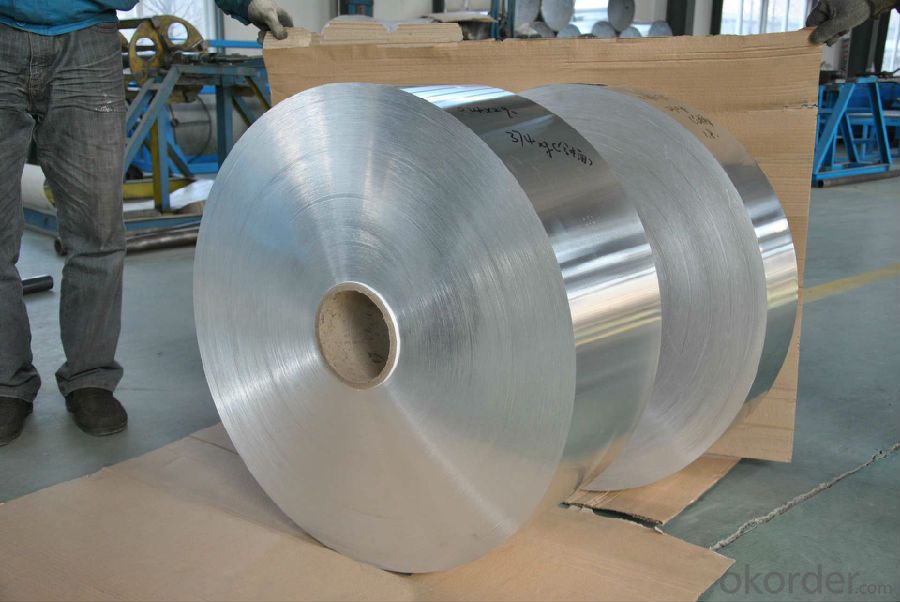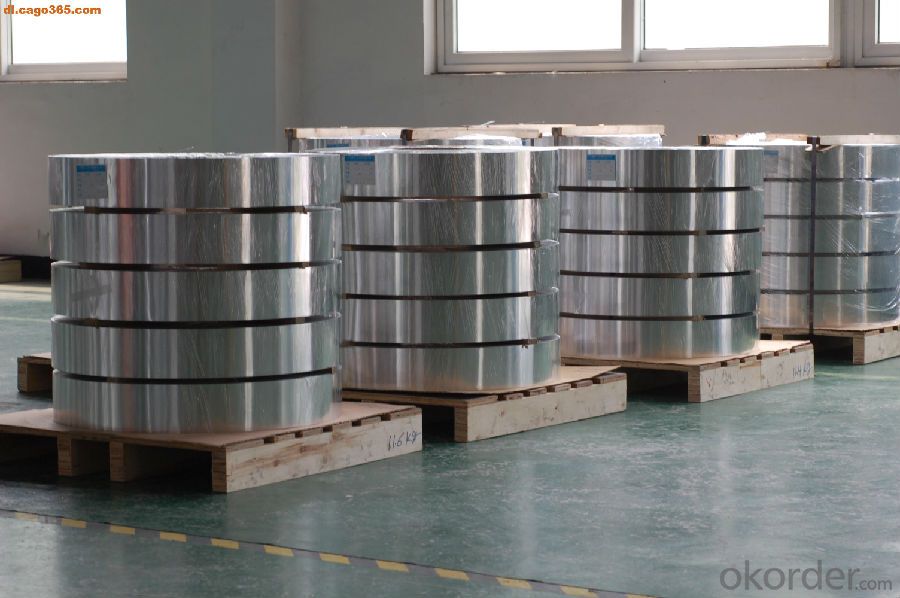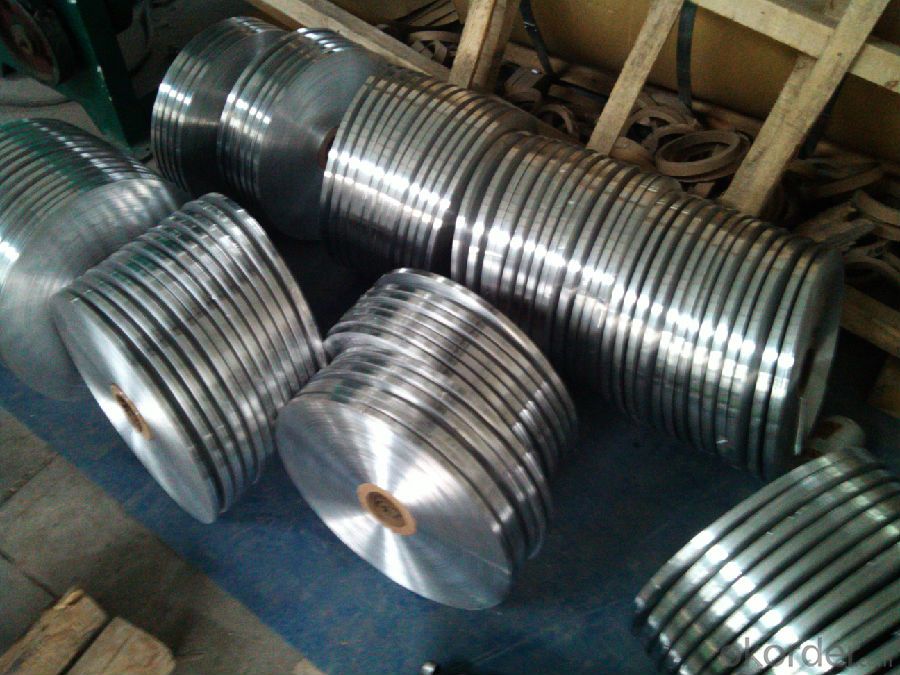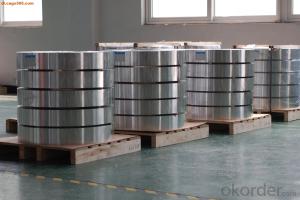EN AW - 5005 Slitted Aluminium Coil With Good Quality
- Loading Port:
- Shanghai
- Payment Terms:
- TT OR LC
- Min Order Qty:
- 5 m.t.
- Supply Capability:
- 1000 m.t./month
OKorder Service Pledge
OKorder Financial Service
You Might Also Like
Item specifice
1. Structure of EN AW - 5005 Slitted Aluminium Coil With Good Quality Description
EN AW - 5005 Slitted Aluminium Coil With Good Quality is one semi-finished aluminium material. This coil can be rolled down to aluminium coil,sheet,circle ect. The alloy AA1050 is widly used in building, industry ect. Its weight is much lower than steel. So many customers choosed aluminium material instead of steel.
2. Specification of EN AW - 5005 Slitted Aluminium Coil With Good Quality
EN AW - 5005 Slitted Aluminium Coil With Good Quality | |
Main Specification | |
Alloy | AA1xxx (AA1050, AA1060, AA1070, AA1100 etc.) |
AA3xxx (AA3003, AA3004, AA3005, AA3105 etc.) | |
AA5xxx, AA6XXX (AA5052,AA5083, AA5754, AA6061, AA6062 etc.) | |
AA8xxx(AA8011, AA8006 etc.) | |
Temper | H14,H16, H18, H22, H24, H26, H32,O/F, T4, T6, T651 |
Thickmess | 0.01mm-100mm |
Width | 30mm-1700mm |
Standard | GB/T 3880-2006/ASTM |
Special specification is available on customer's requirement | |
3. Application of EN AW - 5005 Slitted Aluminium Coil With Good Quality
(1).Interior: wall cladding, ceilings, bathrooms, kitchens and balconies, shutters, doors...
(2).Exterior: wall cladding, facades, roofing, canopies, tunnels,column covers , renovations...
(3).Advertisement: display platforms, signboards, fascia, shop fronts...
4. Feature of EN AW - 5005 Slitted Aluminium Coil With Good Quality
Surfact Quality :
Be free from Oil Stain, Dent, Inclusion, Scratches, Stain, Oxide Dicoloration, Breaks, Corrosion, Roll Marks, Dirt Streaks and other defect which will interfere with use,
Mechenical Property:
Chemical Composite and Mechanical Property
5. Certificate of EN AW - 5005 Slitted Aluminium Coil With Good Quality
SGS and ROHS(if client request, paid by client), MTC(plant provided), Certificate of Origin(FORM A, FORM E, CO), Bureau Veritas and SGS (if client request, paid by client), CIQS certificate
6. Image of EN AW - 5005 Slitted Aluminium Coil With Good Quality



7. Package and shipping of EN AW - 5005 Slitted Aluminium Coil With Good Quality
First, plastic cloth with drying agent inside; Second, Pearl Wool ; Third, wooden cases with dry agent , fumigation wooden pallets, aluminum surface could cover blue PVC film
8. FAQ
1) What is the delivery time?
Depends on actual order, around 20 to 35 days
2) What is the QC system:
We have QC staff of 20 persons and advanced equipment, each production is with MTC traced from Aluminum ingot lot.
3) What market do you mainly sell to?
Australia, America, Asia, Middle East, Western Europe, Africa etc
- Q:Can aluminum coils be used in curtain wall systems?
- Yes, aluminum coils can be used in curtain wall systems. Aluminum is a popular material choice for curtain walls due to its lightweight nature, durability, and corrosion resistance. Aluminum coils can be easily formed and shaped to create the desired profiles for curtain wall systems. Additionally, aluminum is available in a wide range of colors and finishes, allowing for customization and design flexibility. The use of aluminum coils in curtain wall systems also offers energy efficiency benefits, as aluminum has good thermal conductivity properties. Overall, aluminum coils are a suitable and commonly used material in the construction of curtain wall systems.
- Q:What are the different coil lengths available for aluminum coils?
- Aluminum coils come in a variety of lengths, depending on the specific application and requirements. Typically, these lengths range from a few feet to several hundred feet. The most commonly used coil lengths in industries like HVAC, automotive, and construction are 50 feet, 100 feet, and 250 feet. However, it is worth mentioning that custom coil lengths can also be produced to meet the customer's specific needs. These custom lengths may vary depending on factors such as coil thickness, width, and intended use. Ultimately, the available coil lengths for aluminum coils are adaptable and can be customized to meet the demands of various industries and applications.
- Q:Can aluminum coils be painted or coated with other materials?
- Yes, aluminum coils can be painted or coated with other materials. This process is commonly done to enhance the appearance, protect against corrosion, or improve thermal insulation properties of the coils.
- Q:Can aluminum coils be used in the production of aluminum composite ceilings?
- Yes, aluminum coils can be used in the production of aluminum composite ceilings. Aluminum coils are commonly used as the base material for manufacturing aluminum composite panels, which are then used in various applications including ceilings. The coils are processed and coated to meet the desired specifications and aesthetics of the composite ceiling panels.
- Q:Can aluminum coils be used for signage purposes?
- Signage purposes can indeed utilize aluminum coils. Aluminum, as a lightweight and versatile material, finds common use in the signage industry. It possesses exceptional resistance to corrosion, rendering it suitable for both indoor and outdoor applications. Aluminum coils are easily cut and molded into diverse shapes and sizes, enabling the creation of customized signage designs. Moreover, aluminum exhibits high durability and can endure harsh weather conditions, ensuring longevity for signage. Coils can be painted or coated with various finishes to achieve desired aesthetics, while simultaneously safeguarding against fading and scratching. Ultimately, aluminum coils remain a favored choice for signage due to their versatility, durability, and aesthetic appeal.
- Q:What is the hardness of aluminum coils?
- The hardness of aluminum coils is subject to change due to several factors, including the particular alloy employed and the applied tempering process. Typically, in comparison to other metals, aluminum coils exhibit relatively low hardness. Aluminum is esteemed for its lightweight and pliable characteristics, rendering it effortlessly bendable and moldable. Nevertheless, by subjecting aluminum coils to diverse heat treatment methods like annealing or cold working, their hardness can be augmented to fulfill specific criteria. It should be emphasized that the hardness of aluminum coils can also fluctuate depending on the intended purpose and the desired degree of robustness and endurance.
- Q:Are there any specific guidelines for handling and storing aluminum coils in warehouses?
- Yes, there are specific guidelines for handling and storing aluminum coils in warehouses. These guidelines aim to ensure the safety of workers and the integrity of the coils. Here are some key points to consider: 1. Handling: When moving aluminum coils, it is important to use appropriate lifting equipment such as cranes or forklifts with proper attachments to prevent damage. Avoid dragging or dropping the coils, as this can cause deformation or scratching. 2. Storage location: Choose a well-ventilated, dry, and clean area for storing aluminum coils. The storage area should be away from direct sunlight, heat sources, and any chemicals that could react with aluminum. Maintaining a consistent temperature and humidity level is crucial to prevent corrosion or other damage. 3. Stacking: When stacking aluminum coils, use suitable dunnage material such as wooden blocks or rubber mats between each coil to prevent direct contact. This helps to avoid scratches, dents, or other physical damage. Additionally, avoid excessive stacking height to prevent coil deformation or collapse. 4. Handling precautions: Always wear appropriate personal protective equipment (PPE) such as gloves and safety shoes when handling aluminum coils. This protects against potential injuries from sharp edges or falling objects. 5. Labeling: Clearly label each coil with important information such as weight, dimensions, alloy type, and any special handling instructions. This ensures proper identification and helps prevent mishandling or confusion. 6. Regular inspections: Conduct regular inspections of stored aluminum coils to check for any signs of damage or corrosion. If any issues are identified, take appropriate action promptly to prevent further damage. 7. Security measures: Implement security measures to prevent unauthorized access to the storage area. This helps protect the coils from theft or vandalism. It is important to note that specific guidelines may vary depending on the type and size of the aluminum coils, as well as local regulations and industry standards. It is recommended to consult the manufacturer's instructions or seek professional advice to ensure compliance with the appropriate handling and storage guidelines.
- Q:What is the coefficient of thermal expansion of aluminum coils?
- The coefficient of thermal expansion of aluminum coils is typically around 23 x 10^-6 per degree Celsius.
- Q:How are aluminum coils tested for thickness and flatness?
- Aluminum coils are tested for thickness and flatness using various methods to ensure they meet the required specifications. One common method is the non-destructive eddy current testing, which involves passing an alternating current through a coil and measuring the changes in the magnetic field caused by eddy currents induced in the aluminum. These changes can be used to determine the thickness of the coil. In addition to eddy current testing, ultrasonic testing is also employed to measure the thickness of aluminum coils. Ultrasonic waves are sent through the coil, and the time it takes for the waves to bounce back is measured to determine the thickness. This method is highly accurate and can identify any variations in thickness across the entire coil. To assess the flatness of aluminum coils, a straight edge or a laser beam is often used. The coil is placed on a flat surface, and the straight edge or laser beam is placed across the surface of the coil. Any deviations from a perfectly flat surface can be easily identified by observing the gaps or irregularities between the coil and the straight edge or laser beam. In some cases, advanced technologies like laser profilometry can be used to create a three-dimensional map of the surface of the coil, allowing for a comprehensive analysis of its flatness. This method provides highly detailed information about any variations in flatness across the coil's surface. Overall, aluminum coils undergo rigorous testing procedures to ensure their thickness and flatness meet the required standards. These tests are vital in maintaining the quality and reliability of aluminum coils, especially in applications where precision and consistency are of utmost importance.
- Q:Is it okay to combine copper with aluminum in case of minting or coin making? Thanks :)
- i think its fine
1. Manufacturer Overview |
|
|---|---|
| Location | |
| Year Established | |
| Annual Output Value | |
| Main Markets | |
| Company Certifications | |
2. Manufacturer Certificates |
|
|---|---|
| a) Certification Name | |
| Range | |
| Reference | |
| Validity Period | |
3. Manufacturer Capability |
|
|---|---|
| a)Trade Capacity | |
| Nearest Port | |
| Export Percentage | |
| No.of Employees in Trade Department | |
| Language Spoken: | |
| b)Factory Information | |
| Factory Size: | |
| No. of Production Lines | |
| Contract Manufacturing | |
| Product Price Range | |
Send your message to us
EN AW - 5005 Slitted Aluminium Coil With Good Quality
- Loading Port:
- Shanghai
- Payment Terms:
- TT OR LC
- Min Order Qty:
- 5 m.t.
- Supply Capability:
- 1000 m.t./month
OKorder Service Pledge
OKorder Financial Service
Similar products
New products
Hot products
Related keywords





























